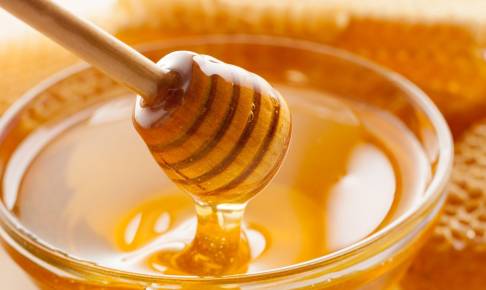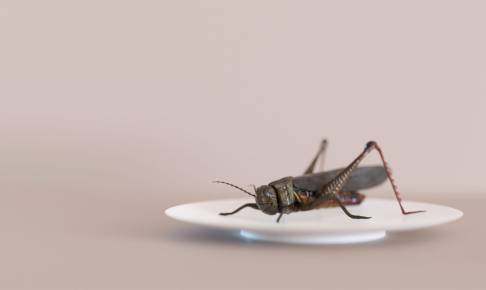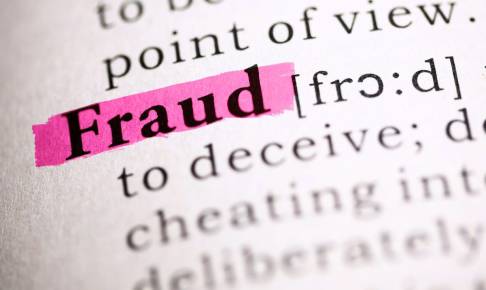Adulterated honey: what does water have to do with it?
Traditional methods for honey authentication become obsolete or demand load of resources. New rapid methods are on the rise.
Raw honey is considered to be a natural energy source with many positive effects on health: antioxidant, antibacterial, and antifungal properties; hay fever prevention; prebiotic; sore throat remedy; etc. On the other hand, if you pay attention to food fraud you will always find honey in the top 10 most often adulterated products, usually surpassed only by olive oil and milk. According to Interpol, 30-35% of all honey currently soldin the world is fraudulent (Save the bees 2019). There is a general consensus that there is no one, single method which can detect adulterated honey. The reason is simply the fact that there are dozens of possible (and profitable) ways to adulterate honey. The circulation of honey fraud news has been identified as a significant factor in consumer doubt related to purchasing behavior (Meerza and Gustafson 2019); it is increasingly difficult for honey manufacturers to claim the premium quality of their products when the whole commodity is affected by frequent fraud cases. The adulteration of honey to market lower-quality honey at normal retail prices can come in a variety of forms. One of them is mislabeling honey concerning geographical or botanical origin. However, the addition of sugar was identified by the Joint Research Centre of EU (JRC) as the most frequently occurring type of fraudulent manipulation (Aries et al. 2016). Exogenous sugar can originate from inappropriate bee-feeding and/or from the direct addition of sugar/syrup to honey.To prove that sugar/syrups have been added to honey is a challenging task. Honey is a natural product containing large amounts of different sugars like fructose, glucose, and di- and trisaccharides. Their concentration can vary widely. Thus, there is no straightforward way to filter out fraudulent products just by measuring sugar concentration. It has been necessary to find a way to differentiate between authentic honey sugar and external added sugar.Measuring stable isotope ratios is a known tool for differentiating chemically-identical molecules with different origins/sources (Carter 2017). Although all free-living plants utilize atmospheric carbon dioxide, different photosynthetic pathways result in different ratios between 13C and 12C isotopes (given as ?13C). Thus, if a honey produced by bees from C3 plants is diluted with a C4 sugar syrup (e.g. cane or corn), It is relatively easy to detect. The method is based on the ?13C measurement of sugars and proteins in honey (AOAC 2013). This test is old, however, and also well-known by dishonest producers.Blending honey with C3 sugars is much more difficult to discover. Although on a much smaller scale, there is variability in the 13C/12C isotope ratio among C3 plants mainly due to species and environmental influences. It is possible to separate the different sugar molecules with HPLC and compare the ?13C values of the different sugar fractions. This method is more complicated and sophisticated than the AOAC 998.12 test. The addition of C3 sugars can be proved down to 10% and C4 sugars down to 1% (AOAC 2013). In a wide-range survey conducted by JRC in 2016 using this method, 14% of the samples were suspected of containing added sugar (Aries et al. 2016). Nonetheless, if by chance the added sugar has a ?13C value similar to that of the original honey sugar, the fraud remains undiscovered.A more r
Raw honey is considered to be a natural energy source with many positive effects on health: antioxidant, antibacterial, and antifungal properties; hay fever prevention; prebiotic; sore throat remedy; etc. On the other hand, if you pay attention to food fraud you will always find honey in the top 10 most often adulterated products, usually surpassed only by olive oil and milk. According to Interpol, 30-35% of all honey currently soldin the world is fraudulent (Save the bees 2019). There is a general consensus that there is no one, single method which can detect adulterated honey. The reason is simply the fact that there are dozens of possible (and profitable) ways to adulterate honey. The circulation of honey fraud news has been identified as a significant factor in consumer doubt related to purchasing behavior (Meerza and Gustafson 2019); it is increasingly difficult for honey manufacturers to claim the premium quality of their products when the whole commodity is affected by frequent fraud cases. The adulteration of honey to market lower-quality honey at normal retail prices can come in a variety of forms. One of them is mislabeling honey concerning geographical or botanical origin. However, the addition of sugar was identified by the Joint Research Centre of EU (JRC) as the most frequently occurring type of fraudulent manipulation (Aries et al. 2016). Exogenous sugar can originate from inappropriate bee-feeding and/or from the direct addition of sugar/syrup to honey.To prove that sugar/syrups have been added to honey is a challenging task. Honey is a natural product containing large amounts of different sugars like fructose, glucose, and di- and trisaccharides. Their concentration can vary widely. Thus, there is no straightforward way to filter out fraudulent products just by measuring sugar concentration. It has been necessary to find a way to differentiate between authentic honey sugar and external added sugar.Measuring stable isotope ratios is a known tool for differentiating chemically-identical molecules with different origins/sources (Carter 2017). Although all free-living plants utilize atmospheric carbon dioxide, different photosynthetic pathways result in different ratios between 13C and 12C isotopes (given as ?13C). Thus, if a honey produced by bees from C3 plants is diluted with a C4 sugar syrup (e.g. cane or corn), It is relatively easy to detect. The method is based on the ?13C measurement of sugars and proteins in honey (AOAC 2013). This test is old, however, and also well-known by dishonest producers.Blending honey with C3 sugars is much more difficult to discover. Although on a much smaller scale, there is variability in the 13C/12C isotope ratio among C3 plants mainly due to species and environmental influences. It is possible to separate the different sugar molecules with HPLC and compare the ?13C values of the different sugar fractions. This method is more complicated and sophisticated than the AOAC 998.12 test. The addition of C3 sugars can be proved down to 10% and C4 sugars down to 1% (AOAC 2013). In a wide-range survey conducted by JRC in 2016 using this method, 14% of the samples were suspected of containing added sugar (Aries et al. 2016). Nonetheless, if by chance the added sugar has a ?13C value similar to that of the original honey sugar, the fraud remains undiscovered.A more r
Download content now





















